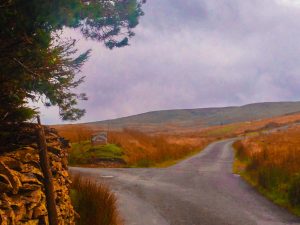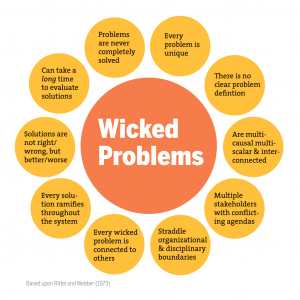
“Which Way Now” photo by Mike Beales downloaded from Flickr CC BYND CC BY-ND 2.0
The Question
In kindergarten, the essential elements of learning are social and emotional development. Students are able to interact with their peers in a classroom, learn to play with each other, share, help each other, and build together mentally and physically. Social and emotional learning continues far beyond kindergarten and into adulthood. With our group project in the creation of Rube Goldberg machines, we have to face the challenge of students working from home. We must ask ourselves how students can continue their social and emotional development outside of the classroom in completing their science project? How can students create meaningful connections with others from their learning?
Interactions
Students can receive support and input from their siblings and parents when building their Rube Goldberg machine. A Rube Goldberg machine has no limitations as to what it can be built out of, and the objective for the function as to the purpose of what the Rube Goldberg does is limitless as well. Students can interact with siblings and parents in the household for finding recyclables, developing their ideas, and researching various Rube Goldberg machines by watching created projects from others posted on YouTube.
Students can use social media to post their video on what they created with their peers and get feedback. Videos can be used synchronously or asynchronously in sharing some of their learning challenges, design ideas, and current progress. A video journal can be created of their learning experience, and
Technology
Learners can record videos and post them on the Flipgrid group site for other members in the classroom to see. It is an asynchronous forum in which learners are able to provide stickers, emojis, and comments towards the created content of other members in the classroom. The videos have privacy protection so that general members of the public don’t have access to student content.
Zoom is a synchronous video streaming service that provides audio and visual of all participants on a screen. Students can share their learning in a larger setting with all participants of a classroom, or the administrator of the meeting can create breakout groups and have students meet in a smaller forum. The groups are randomly made with the size of each group being decided by the instructor.
Our school district is moving towards setting all student accounts to Microsoft and the use of Microsoft software such as OneNote for classroom organization, and the use of Sway for students to build digital stories. Sway is described by Microsoft as an easy tool to incorporate video, pictures, text and other media into interactive digital stories. Students can use the tool in creating a video journal, and use Sway to share with their peers what they have learned.
There are many options available for learners with interfaces providing similar experiences to the programs mentioned above. Students may choose to use social media platforms they may already use in their lives to have social interactions with their peers.
Challenges
Not all students will have the resources at home to create video journals, record their learning experiences, have internet access to share with others, and the hardware needed to create content. Flexibility is needed as such that students can make phone calls with their peers to share the learning and get feedback. Additionally, students don’t need to create video journals of their experiences, but instead can create journals from pencil and paper with text, drawings, learning from others, and personal reflection.
On another note, any technology tool needs to abide by the Freedom of Information and Protection of Privacy Act.
Final thoughts
Adaptations can be used in delivering the curriculum and assessing the learner’s final project while still incorporating the core competencies such as social and emotional learning, digital literacy standards, and science five curriculum. However, the reality is screens cannot replace face to face interactions with learners. At such a unique time in our lives, finding alternatives that can at least create some personal connections between learners is the second best option.




Recent Comments